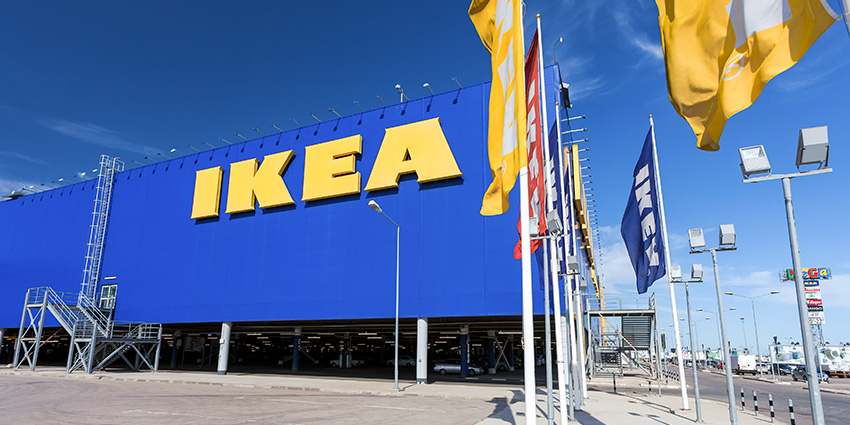Every week, a new headline promises that artificial intelligence can take over the contact center. Vendors talk about limitless automation. Boards ask why their competitors are moving faster. For customer experience leaders, the harder question isn’t whether automation can be done, but what to automate in CX first.
Opinions differ. A Gartner study found that 64% of customers would rather not deal with AI at all when the issue involves money or mistakes. At the same time, Verint reports that 86% of consumers now see AI as helpful in resolving everyday service problems, especially younger customers.
Obviously, CX automation can deliver incredible results when it’s implemented correctly. But the risks of automating too much too fast are becoming increasingly obvious. Just look at Air Canada, the company that lost a tribunal after its chatbot gave the wrong refund information.
So, how can CX leaders get the balance right?
CX Automation Strategy: What to Automate First and Why It Matters
Not every task belongs in the hands of an AI agent. Some are predictable and low-risk, others carry consequences too great to gamble on. The difference is where most automation projects succeed or fail. A useful way to think about it is through an Automation Fit Matrix:
- Low-risk, high-volume tasks: Ideal to automate now – password resets, refunds within policy, and delivery updates.
- Medium-risk, moderate-volume tasks: May be suitable to automate with escalation paths and guardrails. Examples include loyalty program updates or warranty claims.
- High-risk, sensitive tasks: Best left to people. Billing disputes, fraud investigations, or medical queries fall into this category.
The distinction between what AI could do and what it should do is at the heart of customer trust. The industry is still reckoning with the gap between promise and performance; leaders want AI that works – not just more AI for its own sake. Customers expect AI to be practical, empathetic, and tuned to their situation. To deliver on that, CX automation needs a plan.
In most organizations, that plan begins with modest steps, focusing on safe wins and only widening the scope once confidence has been earned. These are the kinds of areas companies can target as they start their automation journey.
Automating Simple CX Tasks: Refunds, Resets, and Quick Wins
These are the jobs that consume huge amounts of agent time, even though they follow strict rules. Password resets, account unlocks, refunds within policy, and reshipments for lost or damaged items all fall into this category. They’re predictable, policy-driven, and reversible if needed, exactly the type of workflow that makes sense for automated CX.
Automating simple requests not only reduces cost but also clears queues quickly. For example, RCBC Bank partnered with Kore.ai to handle high-volume, rules-based service requests. The result: $22 million in annual savings and more than 600,000 cases deflected in the first year.
In retail and e-commerce, refunds and reshipments work the same way. Customers appreciate instant resolution, while brands benefit from consistent enforcement of policies.
From a contact center operations standpoint, these are also the safest places to test new automation vendors or platforms. Mistakes are easy to correct, and the ROI is visible within weeks. For many leaders, this is the “day one” use case that proves automation can deliver without undermining trust.
CX Self-Service Automation: How AI Handles Common Requests
The second priority is giving customers faster access to information they’d rather not wait on hold to get. A big share of calls are the easy ones: checking where an order is, tracking a delivery, confirming an appointment, or asking about a warranty. None of these usually needs judgment from an agent.
Hand them to automation and customers get answers right away. Agents then have more time for the unusual cases that actually require their attention. A good example comes from Deutsche Telekom, which deployed Rasa CALM virtual agents to handle common service queries. The system resolved half of all incoming requests autonomously, cutting agent workload by 30%.
This category also includes knowledge base search. When automation can surface the right article or policy instantly, whether for the customer in self-service or for the agent in conversation, resolution times drop sharply. Many contact center leaders now see agent assist and knowledge retrieval as the most practical first steps in CX automation, because the impact appears instantly.
These are simple improvements, but they create a foundation for trust. Once customers experience automation that works reliably, they’re more open to broader adoption later in the journey.
Proactive CX Automation: Using AI to Prevent Customer Issues
One of the most effective uses of CX automation isn’t responding to issues but preventing them from becoming calls in the first place. Proactive notifications, whether it’s a flight delay, a service outage, or a suspicious transaction, reassure customers and cut inbound volume at the same time.
Airlines show the value clearly. Lufthansa uses Cognigy to send delay and rebooking alerts to millions of passengers. The updates go out before people even think of calling, which keeps contact center traffic from spiking and makes a stressful experience a little easier to handle.
This approach works across sectors. In telecom, customers can get instant notifications when outages are detected, along with estimated recovery times. In financial services, proactive fraud alerts build trust while preventing losses.
AI-Powered Agent Assist: Boosting Productivity and Accuracy
Not all automation has to face the customer. Some of the biggest early gains come from tools that support agents behind the scenes. Post-contact summarization, intelligent prompts, and automated quality checks all improve productivity without exposing customers to risk.
Heathrow Airport’s contact center shows how this works in practice. By automating call summaries, agents cut down on repetitive wrap-up work. The system achieved 95% accuracy, saving valuable minutes per interaction while capturing more consistent data. Multiply that across thousands of daily calls, and the efficiency gain is massive.
Agent assist tools are another safe starting point. By surfacing relevant customer history, policy details, or even suggested replies during live conversations, they shorten resolution times and reduce errors. Property platform Yopa implemented intelligent agent assist and saw productivity improve fourfold, giving teams more bandwidth without adding headcount.
Quality assurance can also benefit. Platforms like Scorebuddy are automating compliance checks, ensuring every interaction meets regulatory and service standards. This adds oversight while reducing the manual workload for supervisors.
Automating Internal CX Workflows: IT and HR Use Cases
Automation doesn’t have to stop at the contact center. Some of the quickest wins come from applying the same principles internally. IT and HR functions are full of routine, policy-driven requests that absorb time but add little strategic value.
Inside the business, IT and HR teams deal with the same type of routine work. IT desks spend hours on password resets and access requests. HR staff answer the same questions on benefits, leave, or onboarding. Automating those jobs takes the load off, leaving specialists to work on tougher problems while employees get quicker responses.
By deploying Kore.ai agents across its global HR function, AMD automated thousands of employee queries, cutting wait times and reducing the need for additional headcount. The impact wasn’t just cost savings; it also improved employee experience by giving staff faster, more consistent answers.
For CX leaders, starting with IT and HR has an added advantage: it builds internal trust in automation before exposing customers to it.
Data-Driven CX Automation: Personalization and CRM Optimization
Clean data is the backbone of reliable CX automation. Without it, even the smartest agents risk producing hallucinations or inconsistent responses. This is why early investments in CRM hygiene and personalization workflows belong on the automation list.
At the most basic level, automation can handle deduplication, enrichment, and profile building inside CRM platforms. This prevents common issues like mismatched records or missing context, problems that undermine both agents and automated systems.
The next step is using automation for personalization. AI can surface the next best action during a customer conversation or trigger outreach campaigns tailored to individual behavior. Simba Sleep is a good example: by automating low-value queries with Ada, human agents were free to focus on sales opportunities. That shift generated £600,000 in additional monthly revenue.
Vodafone has shown how data-driven automation scales across millions of customers. By unifying profiles and using automation to trigger relevant engagement, the company achieved a 30% lift in customer engagement.
How to Scale CX Automation Safely and Sustainably
Getting the first wins with CX automation is only half the job. The harder part is working out how to grow it without creating new risks. Some companies push too far, too fast. The result can be inconsistency, poor data, or worse, reputational damage.
The first step? Before scaling anything, measure the right metrics. Looking only at cost savings misses the point. Leaders who scale well keep an eye on three things above all:
- Time to resolution. Every extra hour on a ticket costs money and frustrates customers; don’t just track deflection, track resolutions.
- Deflection rates. It matters how many calls or chats are solved by automation alone, and how many bounce back to the team.
- CSAT and NPS scores show whether automation helps or irritates. Heathrow’s use of automated call summaries is a reminder that customers notice when agents are freed up to listen more, rather than type more.
After identifying where the biggest ROI comes from with CX automation, scale carefully. Build guardrails first. Audit trails and escalation paths are critical, customers should never feel stuck with a bot. Kill switches allow teams to stop a faulty workflow before it damages trust.
Then examine the evolving ecosystem. Big vendors are baking in controls as they race to capture market share. NICE now pairs CXone Mpower with Cognigy to orchestrate proactive outreach. Genesys promotes AI Studio as a means to provide agents with oversight and guidance. Salesforce ties Agentforce into its Data Cloud for personalization. Microsoft is piloting its Customer Intent Agent, part of a wider push toward autonomous contact centers. Each is betting that governance will be just as important as speed.
The Future of CX Automation: Agentic AI and Autonomous Customer Service
The next wave of CX automation is already taking shape. Instead of isolated bots or scripted workflows, companies are beginning to deploy “agentic AI”, autonomous systems that can take an issue from start to finish across multiple platforms.
Forecasts from Gartner suggest that by 2028, autonomous agents could resolve 80% of customer interactions. That doesn’t mean every task should be handed over. Push automation too far, and the risk is mistakes that damage trust. Hold back completely and rivals move ahead with faster service. Leaders will need to find the balance point between.
The first 90 days should focus on jobs that are simple, repetitive, and safe to automate, such as password resets, refunds within policy, delivery updates, proactive notifications, and post-contact wrap-up.
From there, leaders can scale carefully. Internal workflows in IT and HR, agent assist tools, and CRM hygiene all expand the scope of CX automation without crossing sensitive boundaries. Every step should be measured not just on cost savings, but on time to resolution, customer satisfaction, and agent productivity.
Above all, trust should remain the guide. Customers don’t mind automation when it saves time and keeps things consistent. They do mind when it handles sensitive disputes or delivers wrong information. That line, between what AI can do and what it should do, is the boundary every CX leader must manage.







